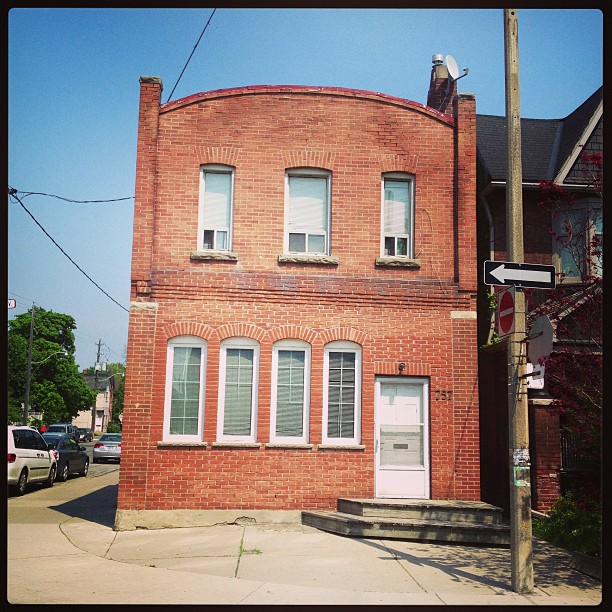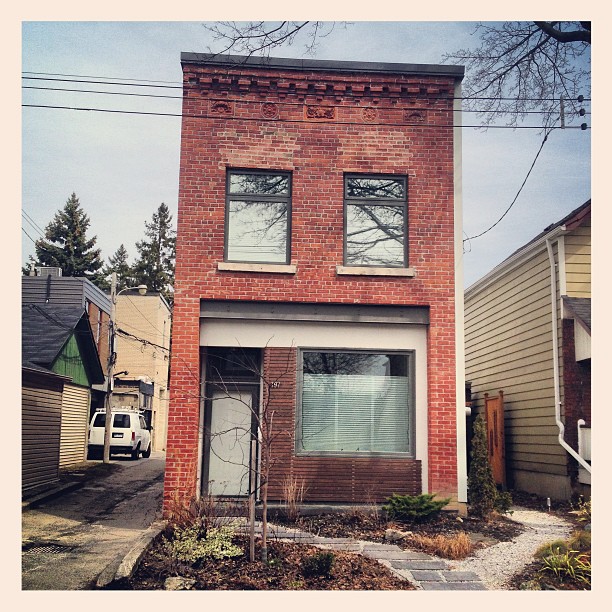allengeorge
Senior Member
Current zoning makes it hard (if not impossible) to have these mixed communities. Witness how hard it is to get corner stores approved in residential neighbourhoods in Toronto unless they’re grandfathered in.
Current zoning makes it hard (if not impossible) to have these mixed communities. Witness how hard it is to get corner stores approved in residential neighbourhoods in Toronto unless they’re grandfathered in.
Cleveland’s first zoning code was written in 1929, and since then it’s been amended in ways that have eroded the walkability of the city. City leaders acknowledge that building compact, mixed-use neighborhoods has basically become illegal under the current zoning code.
But in an exciting development, Cleveland is looking to overhaul its regulations to make the city a better place to walk. City planners told the Plain Dealer that the process will require a “culture shift” to a more urban, less suburban mindset.
Marc Lefkowitz at Network blog Green City Blue Lake attended a recent discussion about the plans:
Cleveland City Council President Kevin Kelley kicked off the meeting, remarking that the Market District in Ohio City and East 4th Street downtown are where locals take visitors to impress them.
But red tape in the zoning code prevents new developments from having the close geometries and design elements that produce a feeling of vibrancy in those postcard locales.
“We already know what a walkable street looks like,” City of Cleveland Planner, Kyle Reisz, said while standing in front of a picture of lower Euclid Avenue. “We need to understand what the DNA is and translate it.”A form based code will translate pages of text into illustrations of good urban form, Reisz adds.
The idea is to remove barriers and encourage buildings that meet the street, place parking behind, and require a generous supply of windows and doors at the ground level.
The zero setback, mixed use building is currently illegal, he said. The award-winning Uptown development, for instance, required variances.The city has evolved its thinking about zoning. When the current code was written in 1929, separating factories from residents was top priority. Most Clevelanders were pedestrians, so little was written into the code about preserving the walkable character of the city, said Reisz. Later amendments to the code discouraged walking while enhancing the street and built environment to aid motorists. Town homes at W. 58th Street and Bridge Avenue with parking garages at ground level create a big driveway instead of a sidewalk. An Aldi’s grocery store surrounded by a big parking lot versus the same store built under a form based code — built to the street with big windows, a front door and parking behind.“The goal is, what you need to do is reachable by foot,” he explained. “It’s more sustainable because you don’t have to drive and put pollutants in the air. And its more equitable because you don’t need to own a car. It also allows RTA to operate more efficiently” (because less parking and more density usually results).
Elsewhere on the Network today: Broken Sidewalk reports that Louisville, a city with a serious pedestrian safety problem, is trying to address it using signals that give walkers a head start. And The City Fix reports on an international summit that drew city leaders together to discuss how to reduce vehicle emissions.
The North Rosedale Residents’ Association is bitching about how difficult the Glen Road reconstruction makes turning onto Whitney from Glen northbound, which is (a) not true, and (b) typically clueless of them. They want the just-finished intersection to be re-rebuilt.
Overzoning (and over-planning) is a product of the sanitary- and order-obsessed 30s-50s, and has resulted in the strangulation of the natural urbanistic processes that occur in cities.Zoning is "evil". Makes "Vision Zero" illegal in most instances.
All the Best Places in Cleveland Are Illegal Under Its Current Zoning
From link.
Fixing new neighborhoods is one part of the puzzle (fixable via legislation and planning), but the bigger issue is how to 'redesign' existing neighborhoods to fix those issues which now exist in reality?This.
Fixating on road design, bike lanes, sidewalks, and such is well intentioned but it is fundamentally low-hanging fruit and the yield is limited. Redesigning communities to shorten and/or eliminate trips, and put more destinations within walking/cycling range, is where the big gains are possible.
- Paul





Overzoning (and over-planning) is a product of the sanitary- and order-obsessed 30s-50s, and has resulted in the strangulation of the natural urbanistic processes that occur in cities.
New districts are zoned and designed so tightly for specific visions that they're never truly born.
Old neighbourhoods are denied amenities seen as noisy or unpleasant (i.e. music halls, corner stores), and so they're gradually deprived of the things that make them worth visiting more than once.
Residential streets are not given the opportunity to evolve into other uses- hence why we haven't seen the rise of more Kensington Markets- nor are they allowed to transition into denser forms (resulting in suburbs perpetually locked into form).
Overplanning demands parking minimums, overprioritizes traffic hierarchy, and its stringent demands make missing-middle development too expensive to be accessible- while privileging single-household structures (to the point where it's easier to turn a previously sub-divided house into one, than the other way around).
As a result, we end up with precious few livable neighbourhoods- which are then priced out of the reach of the ordinary person because everyone wants to live in them.
Fixing new neighborhoods is one part of the puzzle (fixable via legislation and planning), but the bigger issue is how to 'redesign' existing neighborhoods to fix those issues which now exist in reality?
Even with the same amenities, some neighbourhoods have autocentric designs locked into their bones- how do you fix a lollipop neighbourhood (especially those that lack elements like cat-walks)?


Street layout and connectivity - how is that related to sustainability and obesity prevention?
This week’s post discusses connectivity - how easy is it for you to get from point A to be B on foot or by bicycle in your community? This f...verdantnation.blogspot.com
This is something that may require a more radical reenvisioning- how intrusive will those redesigns need to be?
To fix hostile street layouts like that, you need bold policy and zoning reform at the municipal level, driven by a progressive council with a strong mayor. The chances of such minded politicians being elected in Toronto are exactly zero to none. I guess we're stuck with this crap.
We can change the Mayor and Council; we can choose to be bold.
Changing some of the worst neighbourhoods will take time and money (new streets in order to connect to the grid will mean expropriations) but it can be and should be done.
Don't be defeatist. We will never make change with the belief it can't be done.
“The reasonable man adapts himself to the world: the unreasonable one persists in trying to adapt the world to himself. Therefore all progress depends on the unreasonable man.”
― George Bernard Shaw, Man and Superman
Trust me, I fully sympathize with what you're saying and would love to see such a change, but I can't imagine how a prospective councilor or mayor would be able to convince the hordes of NIMBY's in the suburbs that re-aligning streets and introducing small shops back into these neighbourhoods is necessary. The ensuing vitriol would be unbearable.
I wish I could run for councilor. Guys like Holyday have got to go.
Shhh, I've got a secret to tell you...............There are members of Council now who pushed for a Danforth bike lane............and were prepared to lose an election over it.
That's key.
You have to be willing to take the heat for a good policy change and if that means finding a different job after, so be it.
UrbanToronto should enter municipal politics. A candidate from this forum in every ward. It would be a good way to get around the inability to join a political party. We could rally around them to help overcome general visibility difficulties of entering municipal politics.




